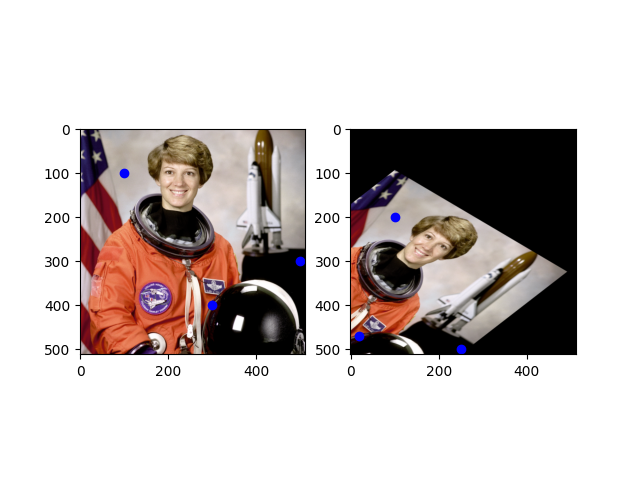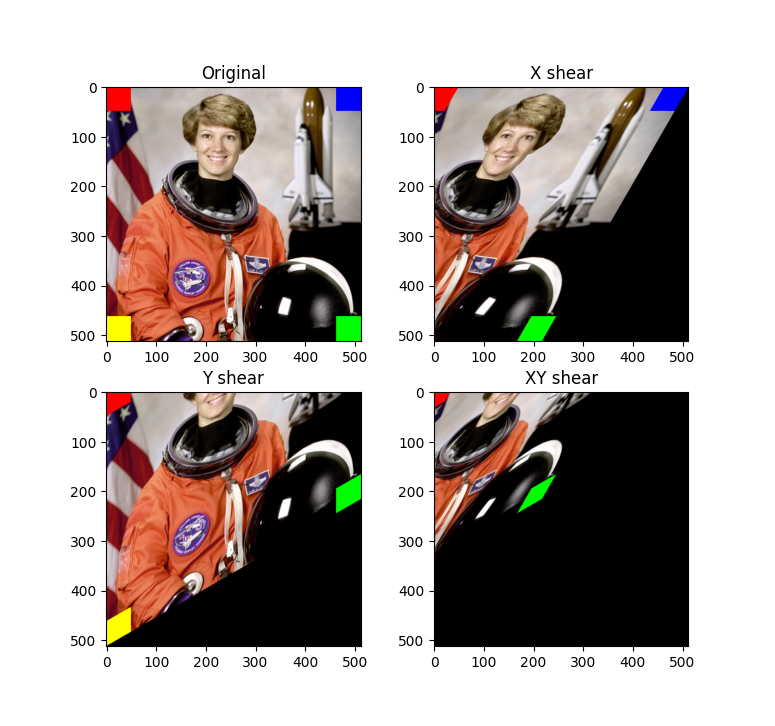
Documentation: https://scikit-image.org/docs/stable/api/skimage.transform.html
Source and destination points are given as NxD arrays,
with the points given in (x, y) coordinates, not in
(row, column).
So for instance, we could have:
src_points = np.array([[100, 100],
[300, 400],
[500, 300]])
dst_points = np.array([[100, 200],
[20, 470],
[250, 500]])
tx = AffineTransform()
tx.estimate(src_points, dst_points)
print(tx.rotation, tx.translation, tx.scale, tx.shear)Which will give us a rotation of 0.53 radians, a
translation of x=101.25, y=95, a scale factor of
sx=0.88, sy=0.91, and a shear angle of
0.38.
The warp function allows us to apply the transform to an
image:
im_ = warp(im, tx.inverse)Note that we have to use tx.inverse, not
tx: the transform in warp is from the
destination to the source.

The transform object is callable, and can be used to compute transformed coordinates:
warped_points = tx(src_points)
print(warped_points)Will give us the same coordinates as the dst_points in
return.
Shear is a bit weird. We can specify shear along x and
y axis with a tuple, or just along x axis.
tx_shear_x = AffineTransform(shear=(math.pi/6, 0))
tx_shear_y = AffineTransform(shear=(0, math.pi/6))
tx_shear_xy = AffineTransform(shear=(math.pi/6, math.pi/6))
For x shear, the angle is the rotation of the y-axis,
with 0 as “down” and going clockwise, etc. It’s weird.